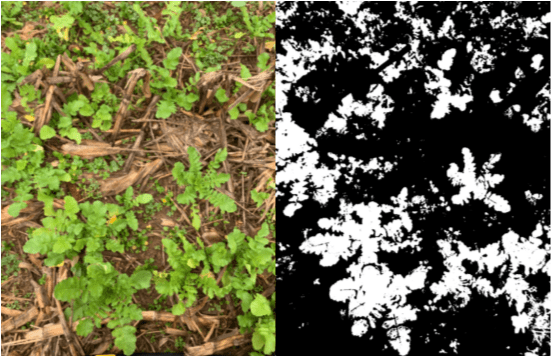USDA press release
New Pandemic Cover Crop Program Helps Producers Continue Cover Crop Systems
Agricultural producers who have coverage under most crop insurance policies are eligible for a premium benefit from the U.S. Department of Agriculture (USDA) if they planted cover crops during this crop year. The Pandemic Cover Crop Program (PCCP), offered by USDA’s Risk Management Agency (RMA), helps farmers maintain their cover crop systems, despite the financial challenges posed by the pandemic.
The PCCP is part of USDA’s Pandemic Assistance for Producers initiative, a bundle of programs to bring financial assistance to farmers, ranchers and producers who felt the impact of COVID-19 market disruptions.
“Cultivating cover crops requires a sustained, long-term investment, and the economic challenges of the pandemic made it financially challenging for many producers to maintain cover crop systems,” said RMA Acting Administrator Richard Flournoy. “Producers use cover crops to improve soil health and gain other agronomic benefits, and this program will reduce producers’ overall premium bill to help ensure producers can continue this climates-smart agricultural practice.”
About the Premium Benefit
PCCP provides premium support to producers who insured their spring crop with most insurance policies and planted a qualifying cover crop during the 2021 crop year. The premium support is $5 per acre, but no more than the full premium owed.
Illinois, Indiana and Iowa have existing programs for producers to receive a premium benefit for planting cover crops. In these states, participating producers will receive an additional benefit.
All cover crops reportable to FSA are eligible and include cereals and other grasses, legumes, brassicas and other non-legume broadleaves, and mixtures of two or more cover crop species planted at the same time.
To receive the benefit for this program, producers must file a Report of Acreage form (FSA-578) for cover crops with USDA’s Farm Service Agency (FSA) by June 15, 2021, which is distinct from the normal acreage reporting date. The normal acreage reporting deadline with FSA has not changed, but to receive the premium benefit, producers must file by June 15. The cover crop fields reported on the Report of Acreage form must match what the producer reported to their insurance company for crop insurance policies. To file the form, producers must contact and make an appointment with their local USDA Service Center.
Program Details
Certain policies are not eligible because they have underlying coverage, which would already receive the benefit or are not designed to be reported in a manner consistent with the Report of Acreage form (FSA-578). PCCP is not available for Whole-Farm Revenue Protection, Enhanced Coverage Option, Hurricane Insurance Protection – Wind Index, and Supplemental Coverage Option. Stacked Income Protection (STAX) and Margin Protection (MP) policies are only eligible for PCCP when insured as a standalone policy. STAX and MP endorsements to underlying policies are not eligible for PCCP.
PCCP does not change acreage reporting dates, reporting requirements, or any other terms of the crop insurance policy.
Cover Crop Conservation Practice Standard
Meanwhile, USDA’s Natural Resources Conservation Service (NRCS) has made the determination not to update its conservation practice standard for cover crops. NRCS originally proposed restricting mechanical harvest of cover crops, but after reviewing input from agricultural producers and groups, NRCS recognizes this could present challenges for producers who use this important conservation practice. The latest version of the conservation practice standard can be found in the Field Office Technical Guide under Section IV, Conservation Practices and Supporting Documents, by State.
More Information
A Notice of Funding Availability was posted on the Federal Register today. Additional information on PCCP, including frequently asked questions, can be found at farmers.gov/pandemic-assistanc
RMA is authorizing additional flexibilities due to coronavirus while continuing to support producers, working through AIPs to deliver services, including processing policies, claims and agreements. RMA staff are working with AIPs and other customers by phone, mail and electronically to continue supporting crop insurance coverage for producers. Farmers with crop insurance questions or needs should continue to contact their insurance agents about conducting business remotely (by telephone or email). More information can be found at farmers.gov/coronavirus.
USDA touches the lives of all Americans each day in so many positive ways. In the Biden-Harris Administration, USDA is transforming America’s food system with a greater focus on more resilient local and regional food production, fairer markets for all producers, ensuring access to healthy and nutritious food in all communities, building new markets and streams of income for farmers and producers using climate smart food and forestry practices, making historic investments in infrastructure and clean energy capabilities in rural America, and committing to equity across the Department by removing systemic barriers and building a workforce more representative of America. To learn more, visit www.usda.gov.
#
USDA is an equal opportunity provider, employer and lender.
more information here to: https://www.farmers.gov/




